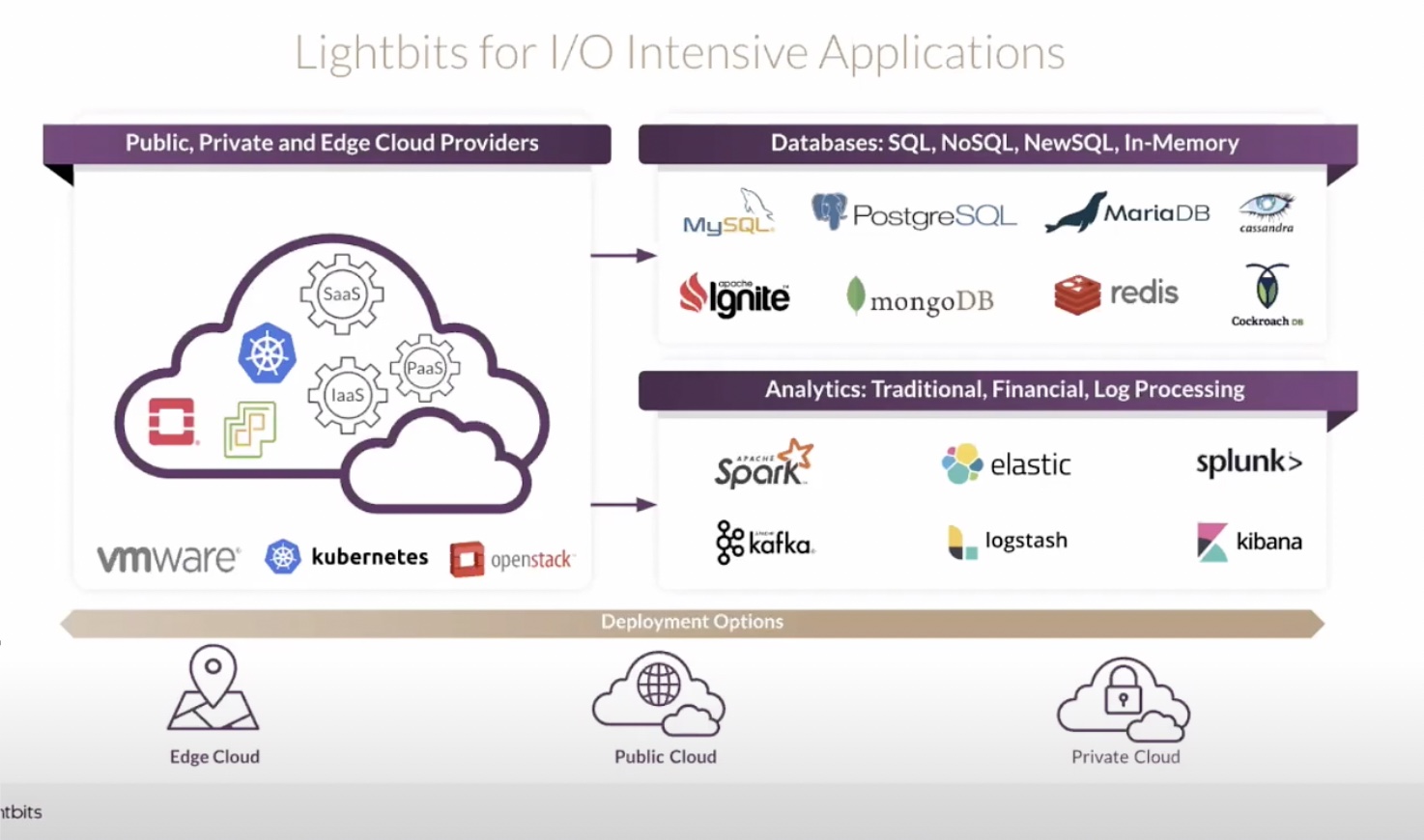About the same time that industries came to fully recognize the value of data in business, data production shot through the roof. Now amidst a data explosion that has no signs of slowing down, companies are grappling to make use of all of their data, debating whether to store it all away or dig into it. At the Cloud Field Day event that took place in June, Lightbits Labs presented the Lightbits Cloud Data Platform, a disaggregated storage infrastructure with performance at par with that of hyperscalers’.
A Class of Enterprises Is Still Cut Off from Hyperscaler Storage
Historically, enterprise data was stored in proprietary storage arrays but the entry of hyperscalers changed that and ushered in a new era of software-defined storage. Reimagined to be more flexible and better performing, these hyperscaler storage infrastructures upstaged traditional systems very easily. This was good news for companies with deep pockets.
But the hyperscalers, in designing these cutting-edge storage arrays left behind a section of enterprises that found themselves unable to afford the hyperscaler infrastructures and as a result resorting to traditional storage arrays that were low on performance and costly to begin with. Now those companies find themselves in desperate need for an economical upgrade.
Lightbits Labs Unlocking Performance and Agility in Storage
The NVMe over Fabrics protocol was groundbreaking in the storage scene. Lightbits Labs expanded that to create NVMe-over-TCP. NVMe/TCP is a protocol that delivers high perf and low latency of the kind that’d be possible only if data centers had local flash storage on Direct-Attached Storage (DAS). With LightBits’ NVMe/TCP technology, enterprises can extend NVMe performance to all of the on-prem infrastructure. By simply adding drives of their choosing to the LightOS servers, users can dial up the performance of any application server to the NVMe level. Open-sourced, clients can communicate remotely with their storage over NVMe/TCP.
Founded by the originators of the NVMe over TCP protocol, Lightbits Labs began its journey with the vision to be able to direct the companies on traditional and proprietary storage systems towards what the trending technologies were. What had started at NVMe-over-TCP matured into what is today called the Lightbits Data Platform. Acting as a bridge between a hyperscale infrastructure and traditional storage systems, Lightbits is a cloud data platform that, much like a hyperscaler, is high on performance, distributed and keeps I/O intensive applications highly available, but is also highly cost-effective.
Lightbits Cloud Data Platform – Disaggregated Storage for Compute-Heavy Workloads
At the recent Cloud Field Day event in California, Lightbits Labs showcased Lightbits Cloud Data Platform along with a couple other collaborative endeavors with industry leaders in the storage space. Amir Michael, Chief Technology Evangelist at Lightbits Labs started the talk with a high-level introduction of Lightbits Labs and an interesting overview of the background in which Lightbits Labs originated. He then introduced Lightbits Cloud Data Platform and explained how it works.
Lightbits Cloud Data Platform presents to enterprises a high-performing storage infrastructure as-a-service so that they don’t have to build their own from the scratch thus potentially saving a lot of CapEx and OpEx. Lightbits is a composable storage infrastructure that is powered with Intelligent Flash Management (IFM) to deliver high endurance and millions of IOPs. Like hyperscaler storage systems, it allows data to be distributed across servers and drives and allocate resources granularly thus preventing capacity wastage while guaranteeing high availability for all applications.
For a platform like Lightbits to work, it needs to have robust integration and support for a rich ecosystem of orchestration platforms, databases and analytics solutions so that users can interface with them flexibly. The makers of Lightbits Cloud Data Platform knew this and so they built compatibility with a number of widely used computing infrastructures like Kubernetes, VMware and OpenStack which Lightbits plugs in with seamlessly.

Recently Lightbits Labs collaborated with Intel to bring to the users a complete software and hardware solution. By optimizing LightOS for Intel’s hardware technologies, Lightbits will bring to the market a storage platform built on NVMe/TCP software that delivers greater performance and cost-efficiency.
Final Verdict
In Lighbits Cloud Data Platform, Lightbits Labs has created an easy-to-consume storage solution that intelligently disaggregates storage from compute thus eliminating dependency between the two and liberates users from the limitations of aggregated and proprietary storage arrays. It brings within the reach of smaller enterprises a hyperscaler-like infrastructure that is powerful, composable and highly compatible, yet cost-effective. With that, it extends the flexibility and efficiency of public cloud so long restricted from private cloud users to on-premises.
To get more information on Lightbits Cloud Data Platform, make sure to watch the other presentations and demonstrations by Lightbits Labs from the recent Cloud Field Day event.

